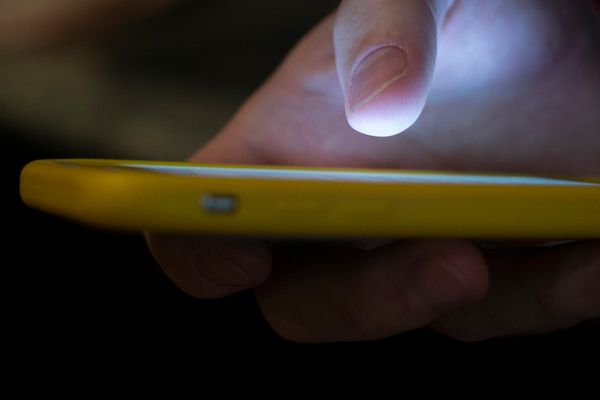In 2016, Apple released the iPhone SE, a smaller iteration of Apple’s next generation of iPhones with larger screens. It was Apple’s modern and affordable version of its iPhone 5 and iPhone 5s in the 4-inch screen size phone category. This past week Apple released its second go at a small form factor phone in a large phone world with its 4.7-inch iPhone SE 2020. While my iPhone SE won’t show up for a few more days as Apple didn’t sample me, I wanted to give my take on the device.
I would like to point out that this analysis of the iPhone SE will not be one of my normal write-ups covering every nit and detail. The main reason for that is the iPhone SE 2020 edition does not have anything black and white new we haven’t already seen in an iPhone. And as in terms of design, it is the same nostalgic design we see in previous generations of iPhones.
I would also like to say much of this analysis will be comparing the iPhone to similar devices at the same price point. This will be hard for a couple of reasons. The first is the iOS experience you get with every iPhone is incomparable to any other OS. The second is that I don’t own all the devices I will be comparing it to (for example the Samsung’s newest A series devices you can read about here), so the comparisons will be limited to critiques I can only make on paper. I will have a few competitive products coming in and will do a real side by side review.
Is the A13 Bionic chip overkill?
The most impressive, and probably the most expensive part about the iPhone SE is the A13 Bionic chip. Apple is advertising the iPhone SE as “the most powerful chip in the smallest form factor,” and I would not argue with that on the CPU (versus GPU and NPU) front, but I’ll have to test it first. One of the pushes for having the A13 Bionic chip is so that the iPhone SE gets support for Apple’s newest features for years to come. The A13 Bionic chip contributed to the iPhone 11 Pro Max’s great battery life, buttery smooth performance, and “Pro” camera quality to the A13 Bionic chip in my review of them here. For the A13 Bionic chip to be in a budget-friendly device, it didn’t make much sense to me, especially since the iPhone SE only benefits from half of each of those three things mentioned above. I believe the A13 Bionic chip is overkill for a budget phone, the battery is small on the iPhone SE, and there is only one camera. Let me explain.
There is no doubt the iPhone SE has great performance because of the A13 Bionic chip. However, if I couldn’t figure out what Apple was doing with all that performance in the iPhone 11 Pro Max, the most powerful iPhone to date, what is the iPhone SE doing with all that performance other than taking up more battery than what it should? To me, it seems like overkill. I imagine it considered this and lowered the core clock speed of the A13 Bionic chip for even better battery since the iPhone SE doesn’t need all the performance.
The iPhone SE has a significantly smaller battery than any of the newer iPhones. The only benefit to having the smaller battery is that Apple’s 18W fast charging is going to charge the device up to 50% faster. It also has wireless charging, which isn’t a common budget phone feature. The A13 Bionic chip benefited the iPhone 11 Pro Max by giving it 15% to 40% less power compared to the A12 Bionic chip. While it allowed the iPhone 11 Pro Max to compete with other flagship devices in battery, it also had a larger battery, which means the percentages will mean more. So, when we see a 5-hour improvement in battery life from the A13 Bionic chip in the iPhone 11 Pro Max, we might see a 2 to 3-hour improvement in the iPhone SE. From Apple saying the iPhone SE gets 13 hours of battery life, 2 to 3-hours is not that much of an improvement.
The iPhone SE has a single 12MP camera on the back and a 7MP camera on the front. While I don’t know how similar the single back camera is the iPhone 11 Pro max, I think it is safe to say that we find ourselves in a similar situation as performance. I don’t believe the A13 Bionic chip is fully utilized in the iPhone SE. The A13 Bionic chip’s Neural Engine was great in the iPhone 11 Pro Max for its new Night mode, Smart HDR mode, and Portrait Mode. It is also great for seamlessly switching between cameras when zooming in and out of a shot. For the iPhone SE, it doesn’t have Night mode because that requires multiple cameras, and it doesn’t transition between cameras. As I digress, Portrait Mode and Smart HDR mode are great for the iPhone SE’s front and back camera. The iPhone SE will be getting Apple’s newest camera features like Smart HDR and Portrait mode because it’s using the A13 Bionic chip.
The iPhone SE’s rear camera is also impressive for video. It can shoot 4k at 30 fps and 60 fps and has extended dynamic range for greater detail, thanks to the A13 Bionic chip and the camera sensor. Samsung’s newest A51 and Google’s Pixel 3a can also shoot 4k at 30 fps but not at 60 fps.
The nostalgic chin and forehead
The display is a paltry 326 PPI HD retina display. I would have liked to see at least a 1080p resolution display in the iPhone SE, but Apple was really shooting for nostalgia with 1334 X 750 resolution. Speaking of nostalgia, it’s unfortunate that the iPhone SE has those huge bezels on the chin and forehead. The chin leaves room for the nostalgic TouchID, but it makes you think, why didn’t Apple give the iPhone SE a semi-bezel-less display and make it into a smaller form factor? To answer that question, we need to look back at the uniformity that Apple has in its iPhones. Over the years, the screen sizes have slowly gotten larger, while the support for smaller screen devices has diminished. This is because iOS does not need to be configured to different screen sizes for every iteration of the iPhone. There is still uniformity in iOS across all devices because there are only minor changes in the screen size across generations. Apple saves a lot of money by making it the classic bezel-full screen we have seen in previous generations.
TouchID is going to be a big seller for the iPhone SE. Those who miss the fingerprint sensor of the old iPhones and don’t find FaceID useful or secure. It also has Haptic Touch, which is a feature that Apple got rid of in the iPhone 11 lineup. I am pleased Apple brought it back in the SE.
The iPhone SE offers great value, for an iPhone
As I said before, it is difficult to compare the iPhone to any Android device. Much of what you are paying for is the Apple ecosystem that every many users love, even if behind on hardware features like dual to quad cameras at the same price point. It is what pulls you in and keeps you there. However, I see a lot more value in other budget-friendly devices on the smartphone market. The Samsung A series has a larger variety of devices with some of the higher, yet reasonably-priced devices have 5G support. The Samsung Galaxy A51 has an FHD+ Super AMOLED display at the same price point of $399. It also has three more rear cameras, an In-Display fingerprint sensor, upgradable storage, and a larger battery. Albeit the display is vastly larger than the iPhone SE, the Galaxy A51 is the better value. I can only recommend the iPhone SE 2020 edition to a select few who want more than they need a smaller phone and those who are looking for a budget-friendly iPhone that won’t run out of gas on you in the next 3 to 4 years.
Wrapping up
The iPhone SE has a lot to offer in a small form factor. Even though I don’t think the iPhone SE has the capacity to take advantage of the A13 Bionic chip, it owes much of its offerings to the A13 Bionic Chip. For those who are looking for a great Apple device with reliable performance, battery life, and camera system, you can’t beat the iPhone SE 2020 edition.
Note: Moor Insights & Strategy co-op Jacob Freyman contributed to this article.
Disclosure: Moor Insights & Strategy, like all research and analyst firms, provides or has provided paid research, analysis, advising, or consulting to many high-tech companies in the industry, including Amazon.com, Advanced Micro Devices, Apstra, ARM Holdings, Aruba Networks, AWS, A-10 Strategies, Bitfusion, Cisco Systems, Dell, Dell EMC, Dell Technologies, Diablo Technologies, Digital Optics, Dreamchain, Echelon, Ericsson, Foxconn, Frame, Fujitsu, Gen Z Consortium, Glue Networks, GlobalFoundries, Google, HP Inc., Hewlett Packard Enterprise, Huawei Technologies, IBM, Intel, Interdigital, Jabil Circuit, Konica Minolta, Lattice Semiconductor, Lenovo, Linux Foundation, MACOM (Applied Micro), MapBox, Mavenir, Mesosphere, Microsoft, National Instruments, NetApp, NOKIA, Nortek, NVIDIA, ON Semiconductor, ONUG, OpenStack Foundation, Panasas, Peraso, Pixelworks, Plume Design, Portworx, Pure Storage, Qualcomm, Rackspace, Rambus, Rayvolt E-Bikes, Red Hat, Samsung Electronics, Silver Peak, SONY, Springpath, Sprint, Stratus Technologies, Symantec, Synaptics, Syniverse, TensTorrent, Tobii Technology, Twitter, Unity Technologies, Verizon Communications, Vidyo, Wave Computing, Wellsmith, Xilinx, Zebra, which may be cited in this article.







